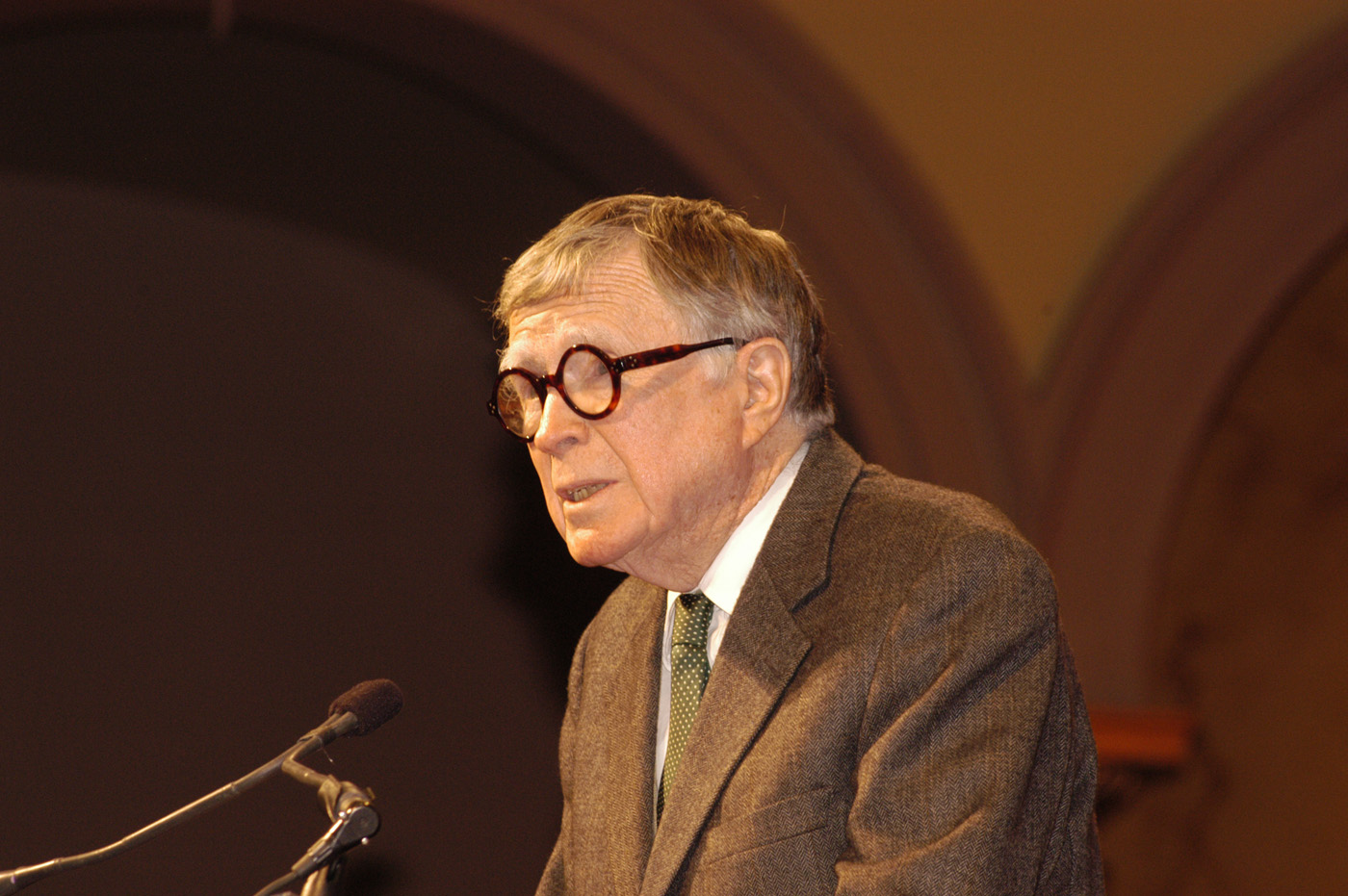By Chase Rynd, Executive Director
 The Board of Trustees and staff of the National Building Museum are saddened to learn of the death of Vincent Scully at the age of 97. In an academic career spanning more than six decades, Vince influenced generations of architects, urban planners, and many others who simply came to love architectural history through his teaching and scholarship. He will be sorely missed.
The Board of Trustees and staff of the National Building Museum are saddened to learn of the death of Vincent Scully at the age of 97. In an academic career spanning more than six decades, Vince influenced generations of architects, urban planners, and many others who simply came to love architectural history through his teaching and scholarship. He will be sorely missed.
Vince’s career was closely associated with Yale University, from which he received bachelor’s, master’s, and doctoral degrees and where he began teaching art and architectural history in 1947. In 1983 he was named a Sterling Professor—the highest academic rank at Yale—and continued teaching at the university even beyond his official retirement in 1991. He also served as Distinguished Visiting Professor at the University of Miami. His scholarly output included seminal texts such as Modern Architecture: The Architecture of Democracy (originally published in 1961) and American Architecture and Urbanism (1969). In 2004, he received the National Medal of Arts, the highest award given to artists and arts patrons by the United States government.
In 1999, the Museum, led by David M. Schwarz, established the Vincent Scully Prize in Vince’s honor. Recognizing exemplary practice, scholarship, or criticism in architecture, historic preservation, and urban design, the prize is now widely regarded as one of the most prestigious in these fields. Vince himself was the first recipient—subsequent Scully Prize laureates include the late urbanist and author Jane Jacobs; His Royal Highness The Prince of Wales; architect, educator, and philanthropist Phyllis Lambert; and prominent critic Paul Goldberger. When the prize was established, David M. Childs, then a design partner at Skidmore, Owings & Merrill and Vince’s former student, said, “I can think of no one who has had a greater impact on the way we think about the places we live in. His influence goes far beyond the university classroom or professional practice. America’s towns and cities look better as a result.”
Architect and educator Robert A. M. Stern, another former student, described Scully as “an engaged intellectual whose lectures are the stuff of legend. With a scholar’s knowledge and an actor’s passion, he brings the buildings of the past and present to life as part of a continuum of artistic commitment and cultural concern. As no one else, Vincent Scully shows us how to view buildings as the embodiment of ideas and ideals.”
The most recent Vincent Scully Prize winner, landscape architect Laurie Olin, said, “It’s widely known that in addition to educating generations of architects Scully encouraged thousands who weren’t design students to look appreciatively at architecture and to care about the nature of the world we make.”
Vince’s insightful critiques helped to broaden the public’s view of architecture, which he called “a communal art, having to do with the whole manmade environment—the human city entire, rather than only the individual buildings in it.” This philosophy meshed perfectly with the mission of the National Building Museum. Vince was a great friend of the Museum, and we will miss him. We extend our condolences to his family and colleagues.
